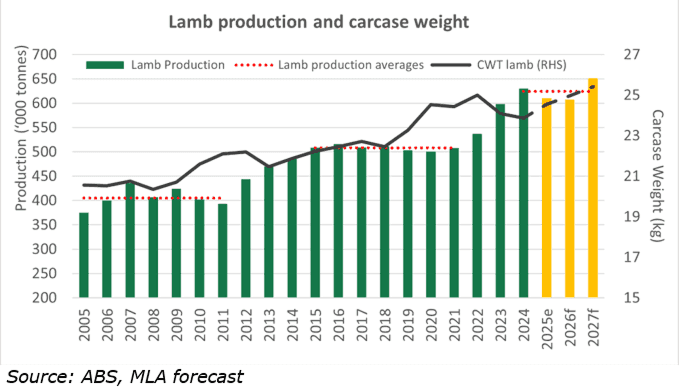Australia: sheep and lamb production poised for growth
The national flock in Australia is estimated at 74.2 million head as of June 2025. Consecutive below-average seasonal conditions across SA, Victoria and southern NSW have elevated lamb slaughter and a sharp mutton turn-off increase. With conditions expected to improve, ewe retention is anticipated to rise through 2026, laying groundwork for a considered rebuild.
History shows lamb production resilience after tough periods. After liquidation phases, output averages tend to increase as flocks become more efficient. Lower-performing animals are culled, while producers retain and multiply the genetics that deliver higher marking rates, faster growth and better feed conversion.
This pattern was clear after the 2000s drought, when the subsequent rebuild settled at an average production level approximately 25% higher than before. Meat & Livestock Australia’s (MLA) forecast shows a consolidation of a similar lift (around 23%) in the years after the dry conditions that ended in 2019. MLA expects a cautious rebuild in 2026, with lamb production dipping roughly 4% from the 2024 record. New highs are expected in 2027 as numbers and weights recover.
Carcass weight is the quiet engine behind this resilience. Over the past two decades, a structural shift from wool-dominant merino systems towards sheepmeat-oriented breeds has supported heavier turn-off.
Average lamb carcass weights have lifted from roughly 20kg in the early 2000s to about 25kg today. The dip recorded in 2023–24 reflected poor feed quality in parts of the south, which pushed more unfinished lambs to market. As seasonal conditions stabilize, the projections anticipate a recovery in weights through 2026 and 2027.
